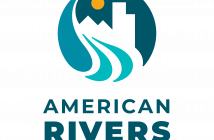 From American Rivers:
From American Rivers:
Sixty-nine dams were removed in 2020, revitalizing local economies and communities and restoring fish, wildlife and river health. Communities in 23 states, working in partnership with non-profit organizations and state and federal agencies, removed the dams to reconnect 624 upstream river miles.
“While this past year was full of challenges, restoring vibrant, free-flowing rivers has been a source of strength and progress for communities nationwide,” said Brian Graber, senior director of river restoration for American Rivers. “Local partners, engineers and construction crews worked under extraordinary circumstances to complete these projects, delivering a wide range of benefits to their rivers and communities.”
On the Middle Fork Nooksack River near Bellingham, Washington, removing a water diversion dam and installing a new water intake opened 16 miles of habitat for salmon, restored cultural resources, and ensured a sustainable supply of clean water for the city. The project, an effort of American Rivers, the Nooksack Indian Tribe, Lummi Nation, City of Bellingham, Paul G. Allen Family Foundation and others demonstrates the power of public-private partnership and innovative solutions to infrastructure challenges.
More than 90,000 dams block rivers in the U.S. Dams harm fish and wildlife habitat and ecosystem health and can pose safety risks to communities. The failure of Michigan’s Edenville Dam in May 2020 was the latest high profile example of the threat that aging, outdated dams pose to public safety. A recent UN report highlighted the growing risk of aging water infrastructure.
American Rivers is calling on the Biden-Harris administration to invest in river health, local economies and public safety, by prioritizing dam removal and river restoration. In the 2021 Blueprint for Action, American Rivers highlights urgent actions the administration should take to advance dam removal and river restoration, including:
- Funding barrier removal to improve habitat, connectivity, water quality and public safety.
- Developing a schedule for reviewing the operation of federally owned dams.
- Developing accurate budget projections that reflect the true costs of maintaining and operating federal water infrastructure.
- Facilitating dam removal and river restoration through the hydropower relicensing process.
American Rivers’ report, Rivers as Economic Engines, outlines how investing in water infrastructure and river restoration creates jobs and benefits the economy. For example, according to a study by the University of North Carolina, the ecological restoration sector directly employs approximately 126,000 workers nationally, and supports another 100,000 jobs indirectly, contributing a combined $25 billion to the economy annually.
“It is time for transformational solutions that strengthen communities, improve public health, address longstanding injustices, and boost our economy. Equitable investment in clean water and healthy rivers is vital to a better future,” said Graber.
On a much larger scale than the projects featured on the 2020 list, Congressman Mike Simpson (R-ID) recently shared a vision for infrastructure investments in the Pacific Northwest that includes removal of four dams on the lower Snake River, which would be the biggest river restoration effort in history. While details need to be addressed before legislation can be enacted, Congressman Simpson’s proposal illustrates how river restoration can be part of transformational solutions that include clean energy, agriculture, job creation and economic revitalization.
In 2020, dams were removed in the following states: California, Connecticut, Illinois, Indiana, Iowa, Massachusetts, Michigan, Minnesota, Montana, New Hampshire, New Jersey, New York, North Carolina, Ohio, Oklahoma, Oregon, Pennsylvania, South Carolina, Texas, Vermont, Virginia, Washington and Wisconsin
A total of 1,797 dams have been removed in the U.S. since 1912. The states with the most dam removals in 2020 were Ohio (11), Massachusetts (6) and New York (6).
Learn more:



